ADMINISTRATIVE NOTE:
Our apologies for yesterday’s lack of new commentary. We had a technical glitch that took a while to resolve. We appreciate your patience, and we are back in regular action.
******************
The United Nations warned the Fed that its actions are harming economies worldwide. Per the Wall Street Journal:
The United Nations Conference on Trade and Development said the Fed risks causing significant harm to developing countries if it persists with rapid rate rises. The agency estimated that a percentage point rise in the Fed’s key interest rate lowers economic output in other rich countries by 0.5% and economic output in poor countries by 0.8% over the subsequent three years.
IMF managing director Georgieva followed the United Nations, saying the Fed has a high responsibility to consider the impact of its actions on the rest of the world.
Powell doesn’t appear phased by the United Nations and IMF warnings. Later that day, he acknowledged the Fed, when determining appropriate monetary policy for the U.S., also considers how its policies affect the global economy. However, he said the Fed would continue to raise interest rates as needed to bring inflation back to its target. Therefore, fighting inflation appears to be more important than global financial stability and the United Nation’s wishes, at least for now.

What To Watch Today
Economy
- 7:30 a.m. ET: Challenger Job Cuts, year-over-year, September (30.3% during prior month)
- 8:30 a.m. ET: Initial Jobless Claims, week ended Oct. 1 (203,000 expected, 193,000 during prior week)
- 8:30 a.m. ET: Continuing Claims, week ended Sep. 24 (1.387 million expected, 1.347 million during prior week)
Earnings

Market Trading Update
The reflexive rally continued Tuesday, and yesterday, after a brief early morning dip, it spent the rest of the afternoon rallying back to near even. From a technical point, this remains bullish action and suggests the recent bottom may hold for a few days. As shown, the market is still not back to overbought, but the intraday rally triggered the seasonal MACD buy signal which signals the start of the seasonally strong period for the markets. The still rather massive short positions outstanding will provide additional support to the rally near term.
With sentiment and positioning still bearish, such should provide the support needed for the reflexive rally to approach our near-term target of 3800-3850. We will use the rally to take profits in trading positions and reduce overall portfolio risk as needed heading into earnings season.
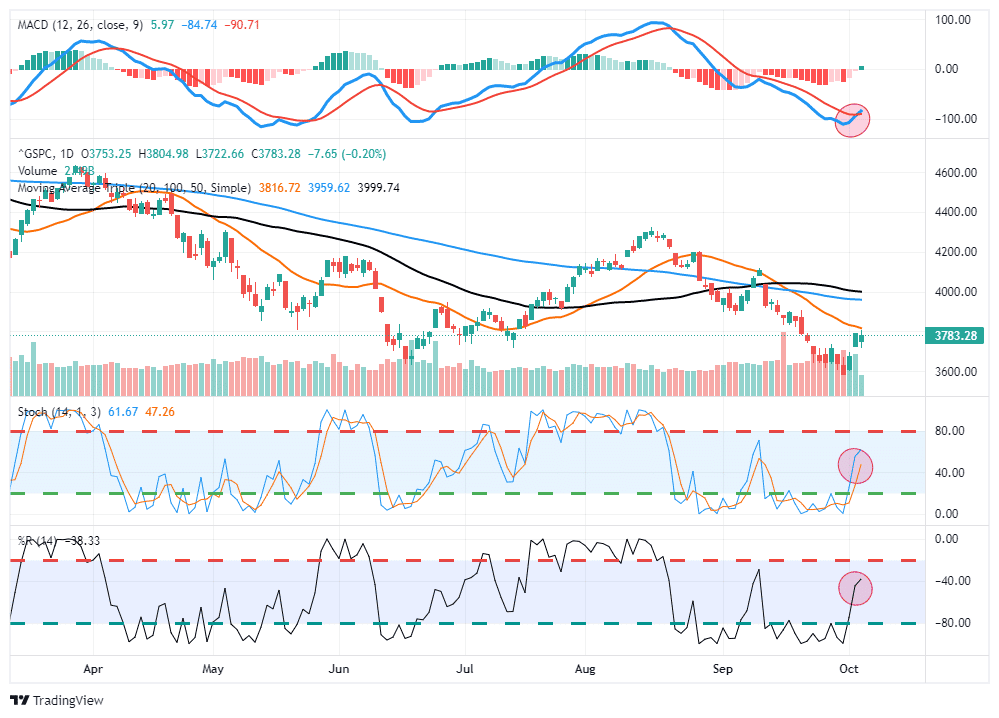
S&P 3500 By Year End?
In mid-August, we published S&P 3500 By Year End if QT Continues. At that time, the S&P was closing in on 4300, having rallied 15% over the prior month. Our concern was that narrative du jour about the Fed pivoting in early 2023 seemed off base. Such sentiment was the polar opposite of what every Fed member was bluntly telling us. Our simple advice at the time was to ignore the narrative and follow the Fed.
The Fed is not the only game in town, but they are the biggest game in town. While many other factors account for stock price performance, liquidity may be the most important to grasp.
In the article, we provided a market road map for the remainder of 2022 based on three liquidity factors related to the Fed. Below we update the map comparing liquidity to the S&P 500. Assuming the Fed does what they say, we should still expect the S&P 500 to close the year around 3500. However, markets will overreact to perceived changes in the Fed’s stance. They may overshoot the liquidity path as it did in mid-August and undershoot it as we saw last week. The bottom line: don’t fight the Fed.
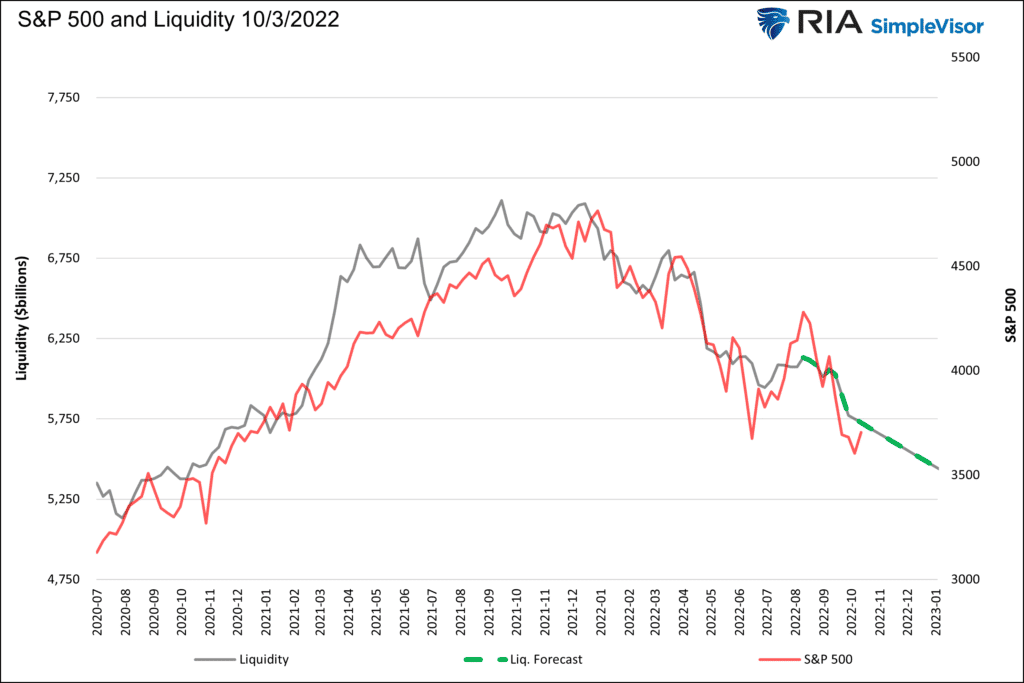
Housing Bubble
The term “housing bubble” is thrown around frequently to describe the rapid appreciation in home values over the prior two years. Using the word “bubble” solely because of surging home prices can be misleading. To be a housing bubble one must also look at homebuyer affordability. A housing bubble occurs when prices rise much faster than the means of potential buyers. The graph below from EPB Research shows that the ratio of average home price to disposable income is now above the 2007 peak and any other experience in the last 60 years. Now, factor in 6-7% mortgage rates, and the means for buyers to buy is even more diminished. In this case, the term housing bubble is being properly used.
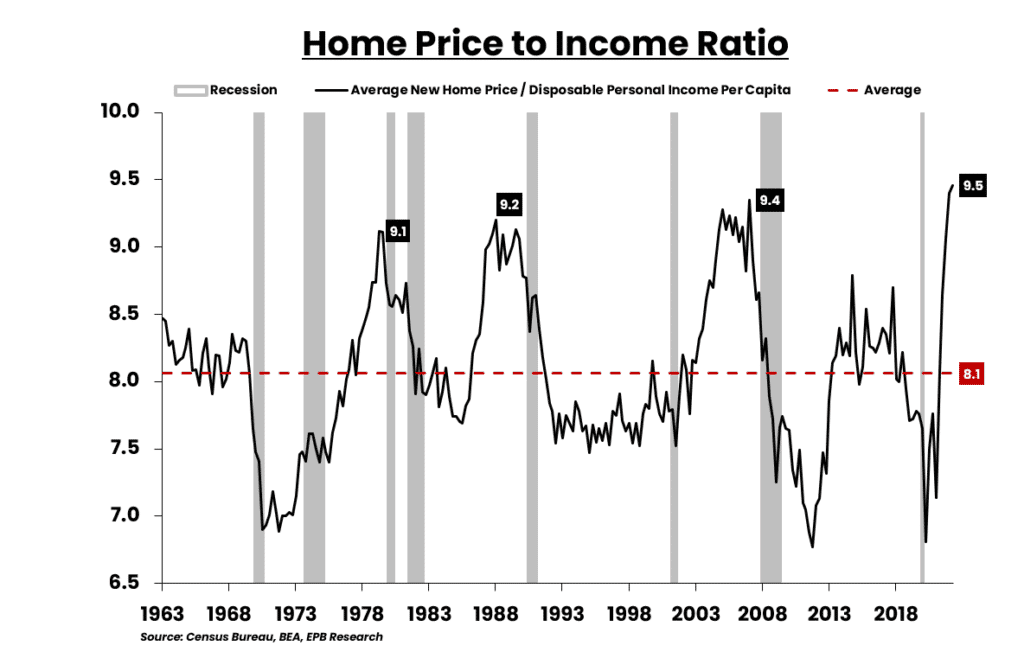
CEO Confidence Will Lead To Higher Unemployment
“In America, half of the CEOs (51%) say they’re considering workforce reductions during the next six months — and in the global survey overall, eight in ten CEOs say the same.
One caveat for people who like working from home: Remote workers may find it in their best interest to show their faces in the office as their job security becomes more uncertain.
It is “likely” and/or “extremely likely” that remote workers will be laid off first, according to a majority (60%) of 3,000 managers polled by beautiful.ai, a presentation software provider. Another 20% were undecided, and the remaining 20% said it wasn’t likely.
When asked how they foresaw their company’s working arrangements in three years for jobs traditionally in an office, nearly half of U.S. CEOs (45%) said it would be a hybrid mix of in-person and remote work. One-third (34%) said the jobs would still be in-office, and 20% said it was fully remote.
CEOs across the globe sounded more keen on in-person work. Two-thirds (65%) said in-office work was the ideal, while 28% said hybrid would be the way and 7% said it would be fully remote. The global findings pulled from U.S. business leaders, but also from CEOs in Australia, Canada, China, India, Japan and certain European Union countries and the United Kingdom.” -CNBC
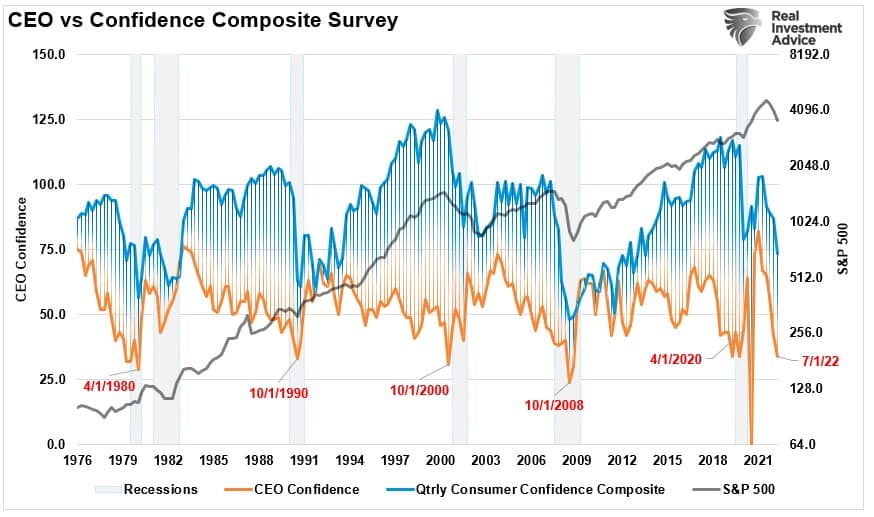
JOLTs, Jolts the Market Higher
Yesterday we highlighted the relatively weak ISM manufacturing data. The key point was to highlight how the market perceives bad news as good because it may make the Fed less hawkish. As Powell has repeatedly said, a more balanced labor market is consistent with slower wage growth, ergo reduced inflationary pressures.
Tuesday, the market got a jolt higher from weak BLS JOLTs data. As we share below, the number of job openings fell by over one million. Such was the largest decline since the first month of the pandemic. While the decline was significant, the number of job openings is still extremely high about 30% above pre-pandemic levels.
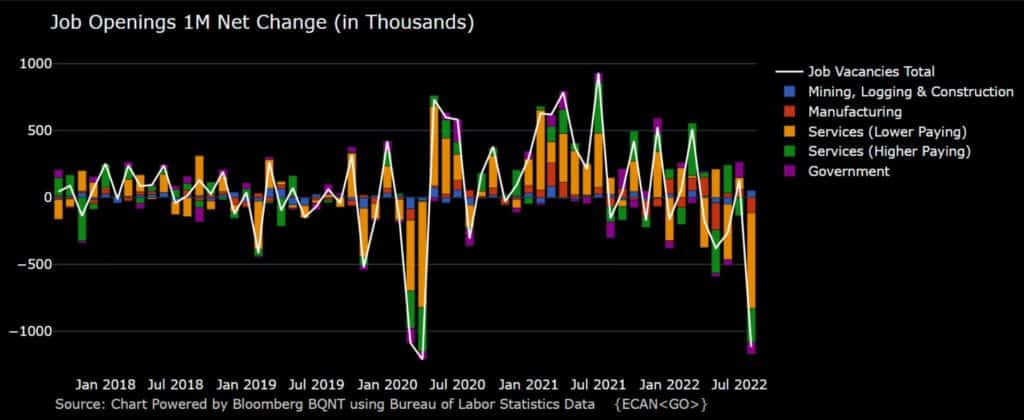
Tweet of the Day
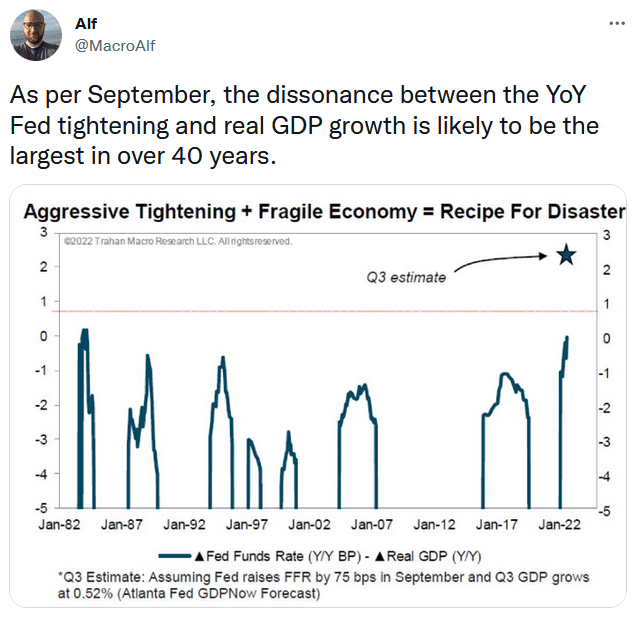
Please subscribe to the daily commentary to receive these updates every morning before the opening bell.
If you found this blog useful, please send it to someone else, share it on social media, or contact us to set up a meeting.




